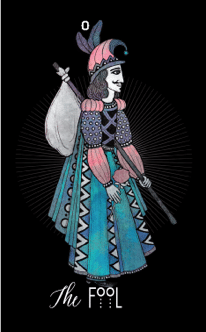Getting married in the summertime certainly has some modern practical and logistical advantages. Warm weather; sparkling sand and sunny skies at the beach, or a serene forest setting beneath a canopy of natural green, or perhaps a starry night under the stars with a romantic orchestra playing in the background–all offer unparalleled backdrops for al fresco ceremonies.
In the summer, workloads tend to be lighter and time off work is generally easier to take. Seasonal flowers for bridal décor abound. Families whose kids are out of school are able to attend nuptial events that they might otherwise be forced to miss. All of these things help in planning and pulling off a summertime wedding, but the tradition goes back to earlier times, when different conventions and concerns ruled the day.
By Juno & Jupiter
In ancient Rome, the Goddess charged with the responsibility for the well-being of brides and mothers was Juno, for whom the month of June is named. Juno’s consort was Jupiter, king of the Roman gods (who was both her brother and her husband…ick!). In order to seek the favor of this powerful pair, many brides and their prospective grooms chose wedding dates to honor the month named for Juno–but even for Romans, not every date in June was an auspicious one for marriage.
Where a wedding fell on the calendar was serious business back then, and many superstitious Romans believed that getting it right could mean the difference between a prosperous, happy marriage that resulted in many children (which was pretty much the entire point of the institution in those days), or a bleak, barren union between two ill-starred souls. In fact, the Romans were so firmly convinced that getting hitched on the wrong date could spell disaster, the upper class often consulted psychic oracles who would divine the most fortuitous day for a couple to wed, not by reading tea leaves, but rather, by interpreting the designs found in the entrails of pigs and other sacrificial animals (again…ick!) This practice, known as haruspicy, was only one of many forms of divination practiced by the Romans, but this was one closely associated with marriage and fertility. (1)
Specific days, considered unlucky for marriage, were avoided as a matter of course: The “Kalends,” which signified the first day of the month and the new moon; the “Ides,” which fell on the full moon, and the “Nones,” which fell in the center of the other two, were all considered inappropriate for weddings.
Thanks, Caesar!
The Romans had other superstitions and customs that resulted in traditions that have come down through the ages and are still practiced today. At Roman weddings, for instance, bridesmaids were required to wear matching gowns that so closely resembled that of the bride as to make her indistinguishable to any evil spirits that might have the nerve to show up uninvited with the intention of putting a curse on the happy couple (usually as payback for some transgression the bride or groom had committed to offend one of the gods or demigods who (often on a whim) felt slighted by whatever human behavior, intentional or unintentional, they might find irksome on any given day).
Another nuptial tradition that traces back to ancient Rome is the wedding cake. Unlike the elaborately decorated confections we’ve come to know today, early Roman wedding cake was more like a wheat or barley bread, and rather than eating it, the cake was crumbled over the bride’s head to augur fertility and good fortune. The newlyweds gobbled up some of the crumbs in a custom known as “confarreatio,” which translates to “eating together,” their first act as a married couple. The wedding guests then descended like a flock of hungry birds to gobble up the rest of the crumbs, conferring good luck on them as well.
Have you ever wondered where the word “bridal” comes from? Well, as the custom of eating crumbled wedding cake crumbs spread throughout Europe, someone in what is now England figured out that it would be handy–and tasty–to have something to wash the dry crumbs down with. An ale, brewed specially for these occasions, known as bryd ealu, a.k.a., “bride’s ale,” was born.
Eventually the cake evolved into something sweeter, but it was still crumbled over the head of the bride, and the guests were given handfuls of “confetto,” a mixture of nuts, dried fruit, and honeyed almonds, some of which was consumed, and the rest, pitched at the bride, again as a symbol of fertility. This “confetto” custom has evolved into the post-ceremony rice toss we’re familiar with today, and is just one of the many wedding day traditions we have the Romans to thank for.
Summer weddings, bridesmaid dresses, cakes and confetti–the Romans certainly paved the way for some wonderful wedding celebrations. Whether you’re getting married or just enjoying a summer fling, let this summer of love be the best yet!
Planning to get hitched and want to scope out an auspicious date for your big day? Let a KEEN advisor be your oracle on all things wedding related.
1. http://www.britannica.com/topic/haruspicy












